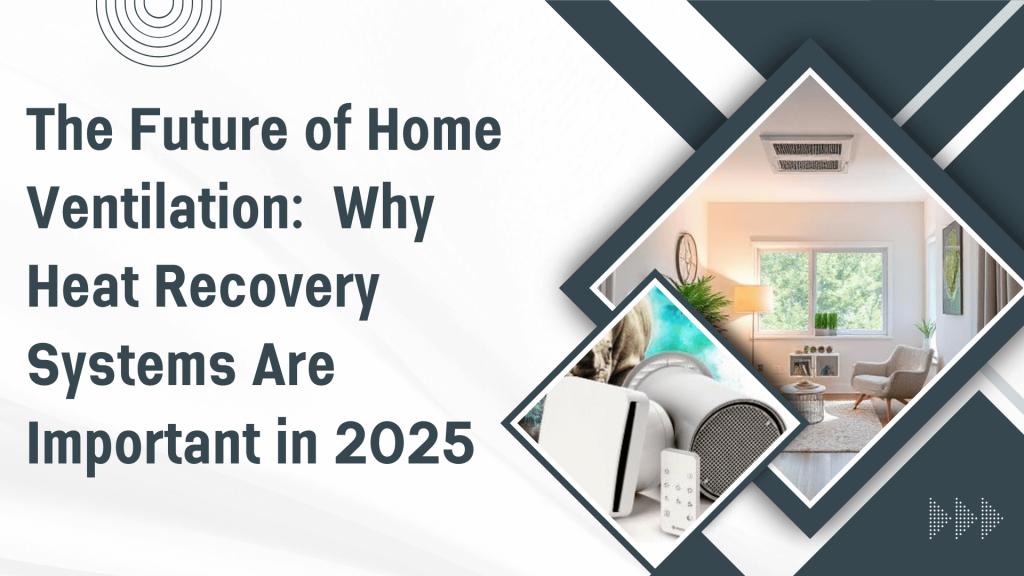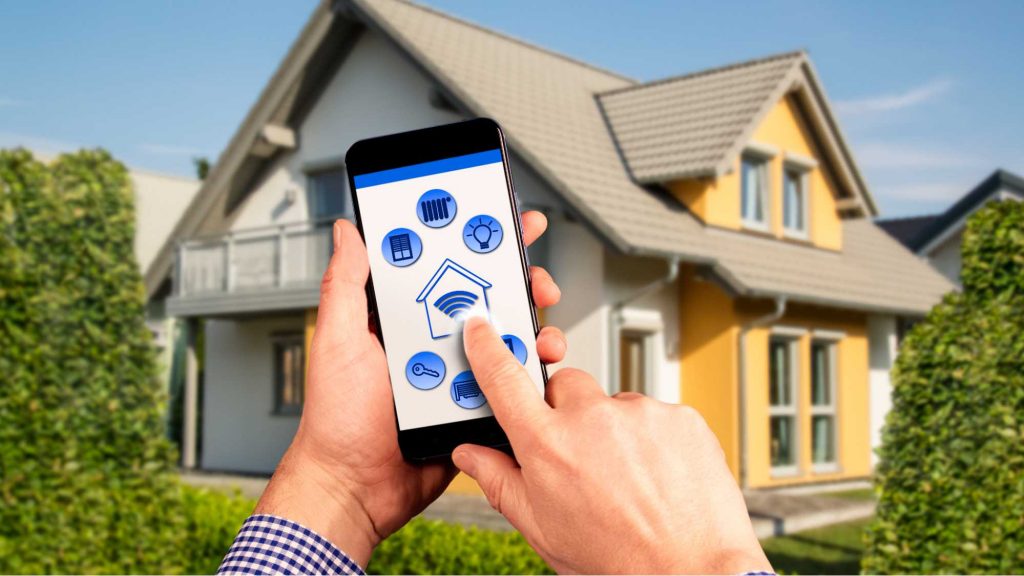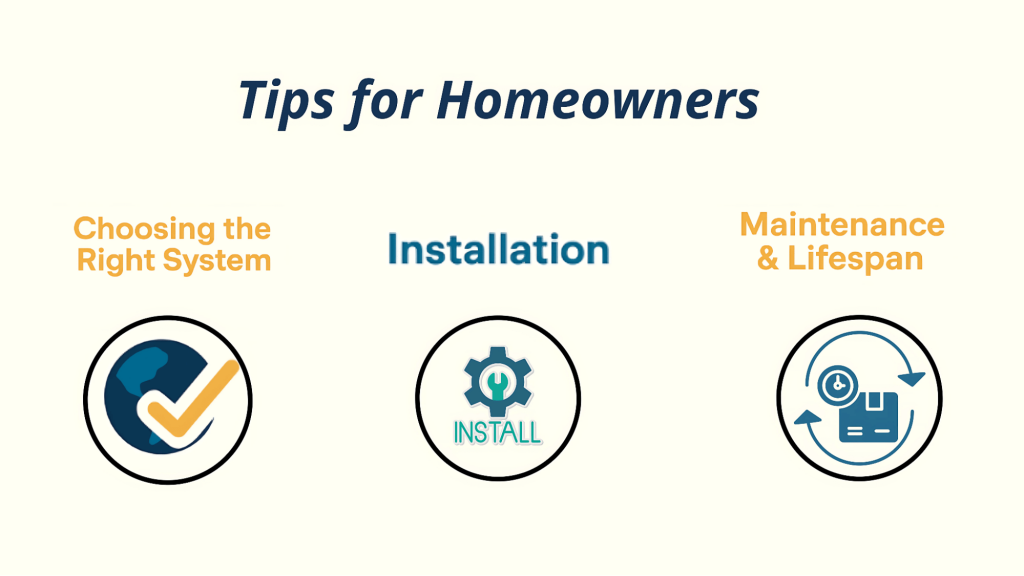Latest Blog
The Future of Home Ventilation: Why Heat Recovery Systems Are Important in 2025

Think about this: it is a crisp winter morning. You turn on the heat in your home. The space feels really lovely and warm. But then, you opened a window for the fresh air. What happens? All warm air gets drained out, and cold air rushes in. You feel cold again, and now your heater has to work extra hard. More bills to pay, then.
This is the problem many houses face: we want fresh air, but we do not want to waste heat. In 2025, this problem is even bigger because energy bills are rising, and countries are asking us to cut down on pollution.
So, what is the answer? Heat recovery ventilation systems. These smart systems give your home fresh, clean air without throwing away the heat you already paid for. They are not just a trend anymore. In fact, they are becoming a “must-have” in new homes, and many people are adding them to old houses too. In this blog, let’s skim through the future of home ventilation and why heat recovery units are important in 2025.
How Heat Recovery Ventilation Works
A heat recovery ventilation system, often called a mechanical ventilation system with heat recovery (MVHR), does two jobs at the same time-
- It removes stale, used air from rooms like kitchens, bathrooms, and laundry rooms.
- It brings in fresh, clean air from outside.
The clever part is what happens in the middle. Before the used warm air leaves, it passes through a special part called a heat exchanger. At the same time, the cold, fresh air comes in. These two streams of air never mix, but they pass very close to each other. The warmth from the old air is transferred to the new air.
Result: You get fresh air coming in, but it is already warmed up. That means no cold drafts, and you do not waste energy. Some systems can keep up to 90% of the heat inside your home.
Energy Savings and Helping the Planet
One of the biggest reasons people choose heat recovery systems is money. Heating a home costs a lot. A good system can cut your heating bill by 20% to 30%. Over a year, that adds up to big savings.

But it is not just about money. Using less energy also means less carbon pollution. Every time you save energy, you help the planet. In 2025, when climate targets are stricter, heat recovery systems are a direct and simple way for families to make a difference.
Better Air and More Comfort
We do not always think about it, but the air inside our homes can get dirty. Moisture, dust, cooking smells, pet hair, and even small chemicals from cleaning products can build up. This can make rooms feel stuffy, cause dampness, and even lead to mould.
Heat recovery systems fix this by running all the time in the background. They constantly remove stale air and bring in fresh, filtered air. This helps with-
- Less damp and mould
- Fewer allergens and pollutants
- Better focus and well-being
And because the air is warmed before it comes in, your home feels evenly comfortable. No more cold bedrooms or stuffy living rooms.
What is New in 2025
In 2025, these systems will be more advanced than ever. They are smarter, smaller, and easier to add to any home.

Smart Controls and Apps
Modern systems come with sensors and Wi-Fi. You can check air quality, humidity, and even carbon dioxide levels from your phone. Some systems can even change the airflow automatically depending on how many people are in the room. This saves more energy and keeps the air fresh without you doing anything.
Compact Designs
Old systems were big and only suited for new houses. But now, slim designs are available. They can fit in a loft, a cupboard, or even inside a wall. This makes it easier for people in older homes to add them without major building work.
Government Rules and Support
In the UK, new building rules in 2025 say all new homes must have low-energy ventilation. That makes heat recovery systems the perfect fit.
There is also financial support-
- Retrofit grants: These cover part of the cost if you add a system to an older home.
- Zero VAT: Most systems and installations have no VAT.
- Building code rules: Every new house must include mechanical ventilation.
This means homeowners save money when installing, and builders have no choice but to use these systems.
Tips for Homeowners
Thinking of getting a heat recovery system? Here is how to plan it right.

Choosing the Right System
Look for-
- Airflow rate: Should match the size of your home.
- Efficiency: At least 85% heat recovery is best.
- Noise: Choose a quiet model, especially for bedrooms.
- Controls: Decide if you want simple manual controls or a smart app.
Always compare different brands and choose one with good support in the UK.
Installation
Good installation is as important as the system itself. Ducts need to reach every main room. Joints must be sealed tight. A poor fit wastes energy and makes the system noisy.
DIY is possible for small parts, but most homes should use a certified installer. This also helps if you want to apply for grants.
Maintenance and Lifespan
These systems last about 10–15 years if you take care of them. Maintenance is simple-
- Change filters every 3–6 months.
- Clean the heat exchanger once a year.
- Check vents for blockages.
- Listen for unusual noises.
Regular checks keep the system working well and avoid expensive problems.
Conclusion
Heat recovery systems are no longer just for eco-homes or fancy new builds. In 2025, they are becoming a standard way to save money, stay comfortable, and protect the planet.
They give you constant fresh air, lower bills, and a healthier home. With new government rules and support, they are more affordable than ever.
If you want a warmer, fresher, and smarter home, now is the time to explore heat recovery ventilation. Talk to a professional installer, check available grants, and see how quickly the system pays for itself.
In the end, heat recovery systems help your wallet, your health, and the environment, all at once. That is why they are essential for modern homes in 2025.
